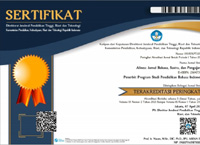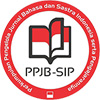Application of the Mimetic Approach in Learning the Religious Values of Novel “Ketika Cinta Bertasbih 1â€
Abstract
This article describes the application of the mimetic approach in learning the religious value of the novel "When Cinta Bertasbih 1" The subject of the research is the students of grade XI SMA Pasundan 1 Cianjur. Research using a classroom action model, done with two cycles. Data collection using observation format, assessment rubric, and questionnaire. The results showed the application of mimetic approach can improve the process and the student learning outcomes. Before the first cycle starts, pre-test first test. Prasiklus analysis results obtained the highest results 83 Dan lowest 47 with an average of 64% and the percentage completeness of 49% this means that learning has not been as expected. After the action in cycle I obtained the highest 90 and the lowest 53 with values with an average value of 65% and 60% completion percentage, this also means the learning outcomes have not been as expected, but it is better when compared with the results of prasiklus evaluation. Akhirtnya, in cycle II obtained the highest result 93 and lowest 53 with a value with an average value of 80 and 80% completion percentage means learning outcomes though still not in accordance with the expected, but it is better when compared with the results of the evaluation cycle I. With Thus, the use of a mimetic approach tends to improve learning outcomes.
Â
Keywords: Mimetic approach, religious value, novel when love glorifies
Full Text:
PDFReferences
At-Momosuwinto.2009. Analisis Karya Sastra Novel. Bandung, CV Sinar Baru.
Nurgiatoro. 2007. Pengembangan Karya Sastra Indonesia. Yogyakarta Rineka Cipta.
Pradopo. 2008. Tipe Pendekatan Kritik Sastra, Jakarta : Galia Indonesia
DOI: https://doi.org/10.35194/alinea.v1i2.193
Refbacks
- There are currently no refbacks.
Alinea: Jurnal Bahasa, Sastra, dan Pengajaran indexed and suported by:

This work is licensed under a Creative Commons Attribution-ShareAlike 4.0 International License.








